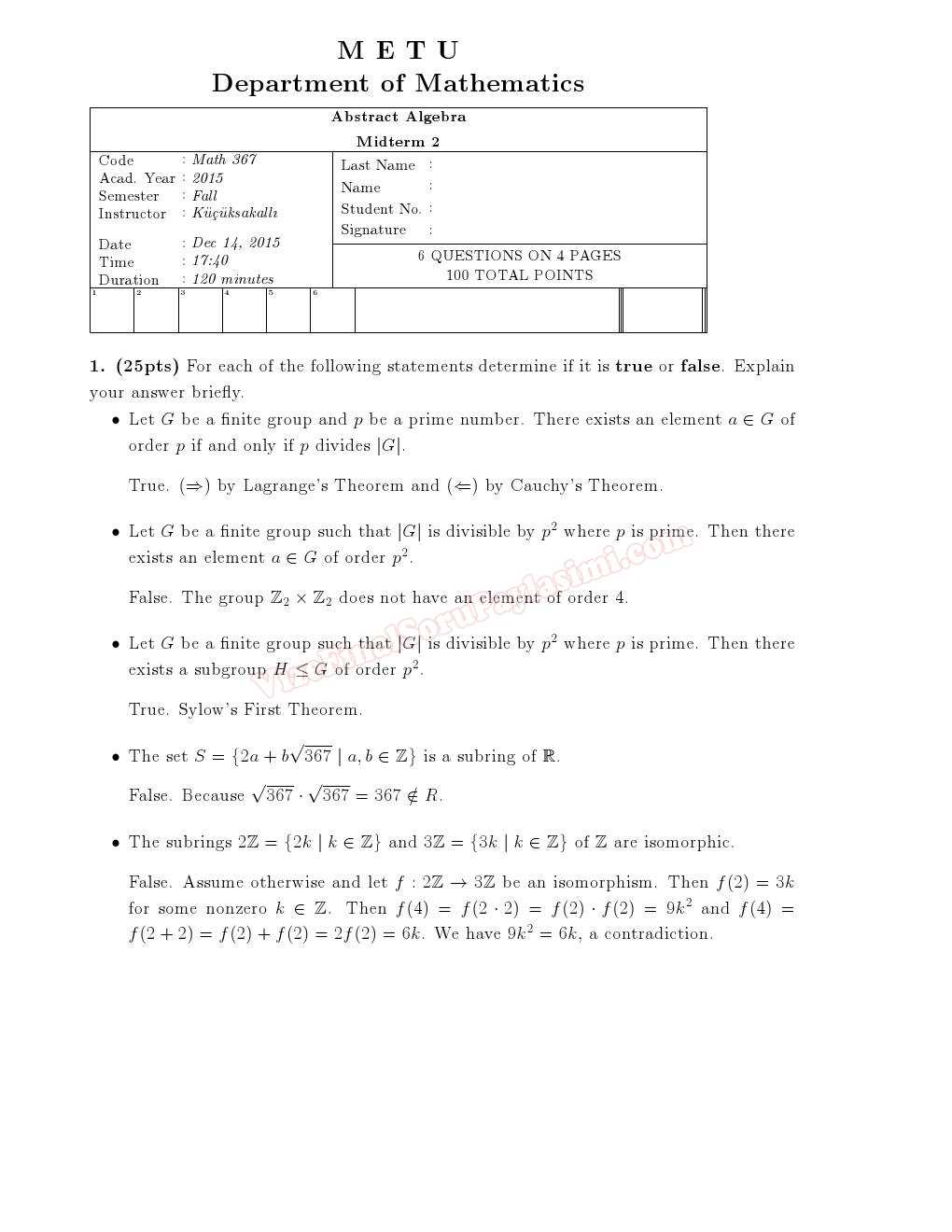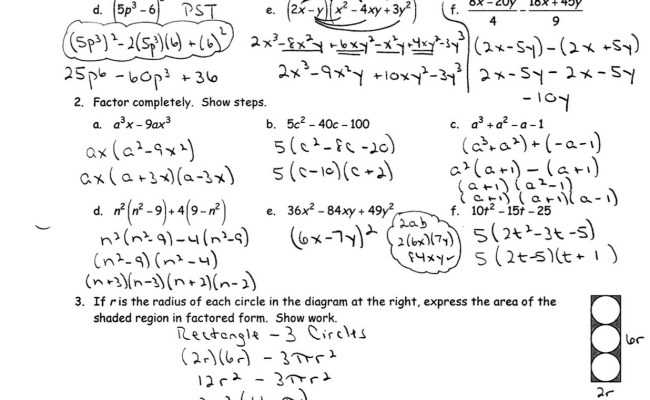
To solve quadratic equations, remember that factoring, completing the square, and using the quadratic formula are your primary tools. For factoring, ensure the leading coefficient is 1 before finding two numbers that multiply to the constant term and add up to the middle coefficient. If factoring is difficult, switch to the quadratic formula: x = (-b ± √(b² – 4ac)) / 2a.
For systems of equations, the substitution method works well when one equation is easily solved for one variable. With the elimination method, manipulate the equations to cancel out one variable and solve for the other. Always check your solution by substituting back into both original equations.
In terms of logarithms, convert between exponential and logarithmic forms. Recall the rule log_b(x) = y is equivalent to b^y = x. Simplify expressions by applying logarithmic properties such as log_b(xy) = log_b(x) + log_b(y) and log_b(x/y) = log_b(x) – log_b(y).
When dealing with rational expressions, first factor both the numerator and the denominator, cancel out any common factors, and simplify the result. Don’t forget to check for restrictions in the domain where the denominator equals zero.
For sequences and series, use the arithmetic sequence formula a_n = a_1 + (n – 1)d for finding specific terms, and the sum formula S_n = n/2(a_1 + a_n) for finding the sum. Geometric sequences use a_n = a_1 * r^(n-1), where r is the common ratio.
Review these concepts thoroughly to make sure you’re ready for the exam. Practice problems for each type of question will reinforce your understanding and ensure a solid performance. Good luck!
Algebra 2 Semester 1 Final Exam Review Answer Key

For solving quadratic equations using the quadratic formula, remember to apply the formula x = (-b ± √(b² – 4ac)) / 2a. Plug in the coefficients from the equation and simplify. For example, if the equation is 2x² – 4x – 6 = 0, a = 2, b = -4, and c = -6. Substitute these values into the formula: x = (4 ± √((-4)² – 4(2)(-6))) / 2(2). This simplifies to x = (4 ± √(16 + 48)) / 4, giving x = (4 ± √64) / 4. Therefore, x = (4 ± 8) / 4, so x = 3 or x = -1.
Simplifying Rational Expressions
For rational expressions, factor both the numerator and denominator, and cancel out common factors. For example, simplify (2x² + 4x) / (4x). Factor the numerator: 2x(x + 2) / 4x. Cancel the common factor of 2x, resulting in (x + 2) / 2. Always check for restrictions where the denominator equals zero. In this case, x ≠ 0.
Solving Systems of Equations
For systems of linear equations, use either substitution or elimination. For example, to solve the system:
2x + 3y = 12
4x – y = 7First, solve one equation for a variable. From the second equation, solve for y: y = 4x – 7. Substitute this into the first equation: 2x + 3(4x – 7) = 12. Simplify and solve for x: 2x + 12x – 21 = 12, which becomes 14x = 33. Thus, x = 33/14. Substitute x back into y = 4x – 7 to find y = (4 * 33/14) – 7 = 132/14 – 7 = 132/14 – 98/14 = 34/14 = 17/7. Therefore, the solution is x = 33/14 and y = 17/7.
Key Formulas and Concepts to Focus On

Focus on the following areas for success in your Algebra 2 semester 1 final exam:
Quadratic Equations
- Quadratic Formula:
x = (-b ± √(b² - 4ac)) / 2a - Factoring techniques (difference of squares, trinomials)
- Vertex form of a quadratic:
y = a(x - h)² + k
Polynomials
- Degree of a polynomial and end behavior
- Operations with polynomials: addition, subtraction, multiplication, division
- Remainder and Factor Theorems:
f(x) = (x - c)Q(x) + R
Focus on simplifying expressions, solving for roots, and analyzing the graph’s key features like vertex, intercepts, and symmetry. Keep practice problems handy to reinforce your understanding of each concept!
Step-by-Step Solutions for Common Problem Types

For quadratic equations, begin by identifying if it’s in standard form: ax² + bx + c = 0. If so, apply the quadratic formula:
x = (-b ± √(b² - 4ac)) / 2a
Plug in the values of a, b, and c from the equation. Simplify the terms under the square root, then solve for x by calculating both the positive and negative roots. Verify your solutions by substituting them back into the original equation.
For systems of linear equations, use substitution or elimination. Start with substitution by solving one equation for a variable (for example, x = 2y + 3) and then substitute this into the other equation. Simplify and solve for the second variable. Once you find that value, substitute it back into one of the original equations to find the first variable.
When dealing with exponential functions, recall the form y = ab^x. To solve for unknowns, take the natural logarithm of both sides to simplify the equation:
ln(y) = ln(ab^x)
This becomes:
ln(y) = ln(a) + xln(b)
Now, isolate x and solve. If necessary, use a calculator to find ln values.
For rational expressions, factor both the numerator and the denominator to identify common factors. Cancel out any common terms, and then simplify the resulting expression. If there are restrictions (such as division by zero), ensure that any excluded values for the variable are noted.
For logarithmic equations, use the property that log_b(x) = y implies b^y = x. To solve for x, rewrite the logarithmic equation in its exponential form and then solve for the variable.
When working with functions, check for intercepts and asymptotes. For rational functions, the vertical asymptotes occur where the denominator equals zero. Horizontal asymptotes depend on the degrees of the numerator and denominator. Solve for these by analyzing the limits of the function as x approaches infinity.
Practice Problems with Answer Key for Self-Testing
Test your skills with these practice problems and use the answer key to check your understanding. These problems cover key topics in Algebra 2 and will help reinforce concepts from the semester.
Problem 1: Solving Quadratic Equations

Solve the quadratic equation: x² – 5x + 6 = 0
Answer: (x – 2)(x – 3) = 0, so x = 2 and x = 3
Problem 2: Graphing Linear Equations
Graph the equation y = 2x – 4. Find the slope and y-intercept.
Answer: Slope = 2, y-intercept = -4. Plot the line using the slope and y-intercept.
Problem 3: Simplifying Rational Expressions
Simplify the expression: (2x² – 8) / (4x)
Answer: (2x² – 8) / (4x) = (2(x² – 4)) / (4x) = (x + 2)(x – 2) / 4x = (x + 2)(x – 2) / 4x
Problem 4: Solving Systems of Equations
Solve the system of equations:
y = 3x – 2 and y = -x + 4
Answer: Set the equations equal to each other: 3x – 2 = -x + 4. Solving for x gives x = 3. Substituting x = 3 into y = 3x – 2 gives y = 7. The solution is (3, 7).
Problem 5: Factoring Polynomials
Factor the expression: x² – 10x + 21
Answer: (x – 3)(x – 7)
Review each problem carefully and use the answers to identify areas that need more practice. This process will help improve your performance and boost your confidence for the exam.